|
1.
CENTRAL AND WEST AFRICA
Producer comments on international demand
Demand in the Philippines remains stable with no
significant changes reported. A similar situation is
reported for Vietnam where demand is flat but with a
continued preference for tali. Producers comment that
imported stocks appear to be above normal in Middle East
markets as construction activities slow.
The markets in Europe are beginning to see the annual
slowdown which is typical for the pre-holiday season.
Padouk and iroko are in demand in Belgium wherea s here
appears a growing interest in red timbers in France.
Demand in Germany continues to be slow while in Spain
there has been more interest recently in sapelli and agba
while in Italy there is steady demand for ayous with some
recent inquiries for iroko.
Challenging harvesting condition but production
maintained
From the end of May heavy rain has impacted harvesting
in Gabon but, despite the challenging weather, production
has not been affected. Labour problems are again at the
fore, while unskilled workers can be found there is a
shortage of experienced local technicians and this
continues to be a problem for the timber industry. The
government is pressing for more technical education in
forestry-related fields to address this shortfall.
Milling operations in Gabon are still facing significant
disruptions due to ongoing electricity blackouts affecting
peeling and plywood industries especially in the Nkok
SEZ.
The weather in Cameroon is transitioning from the dry to
rain season which started in June. During the dry period
harvesting operations proceeded smoothly allowing for a
build-up in stocks in preparation for the increased
challenges that typically accompany the rainy season.
Unlike the situation in Gabon, worker availability is not a
significant issue in Cameroon currently,
In the north of Congo heavy rains are impacting the
transportation of timber to Douala Port. It is reported the
southern regions are experiencing the full rain season so
harvesting is a challenge especially as demand in China
has picked up notably for okoume, padouk, bilinga,
movingui, sapell and okan.
Gabon plans higher production
For 2024 Gabon plans to raise sawnwood timber
production to 1.351 million cubic metres compared to the
1.333 million cubic metres in 2023. This forecast was
included in the information in the latest bond issue issued
by Gabon.
A significant part of this growth is expected from mills in
the Nkok SEZ which, according to official data, account
for more than 40% of the country's export productions.
Data from the Nkok Administrative Authority shows there
was an almost 13% increase in the number of containers
shipped in February 2024 compared to January.
In other news, the government in Gabon plans to launch a
timber exchange to establish a platform for exchanges
between stakeholders and ensure the traceability. This
project also aims to create opportunities for small
operators by facilitating their access to markets.
See:
https://www.lenouveaugabon.com/fr/agro-bois/0606-20354-bois-debite-le-gabon-vise-une-production-de-1-3-million-de-men-2024-soutenue-par-les-zones-economiques-dynamiques
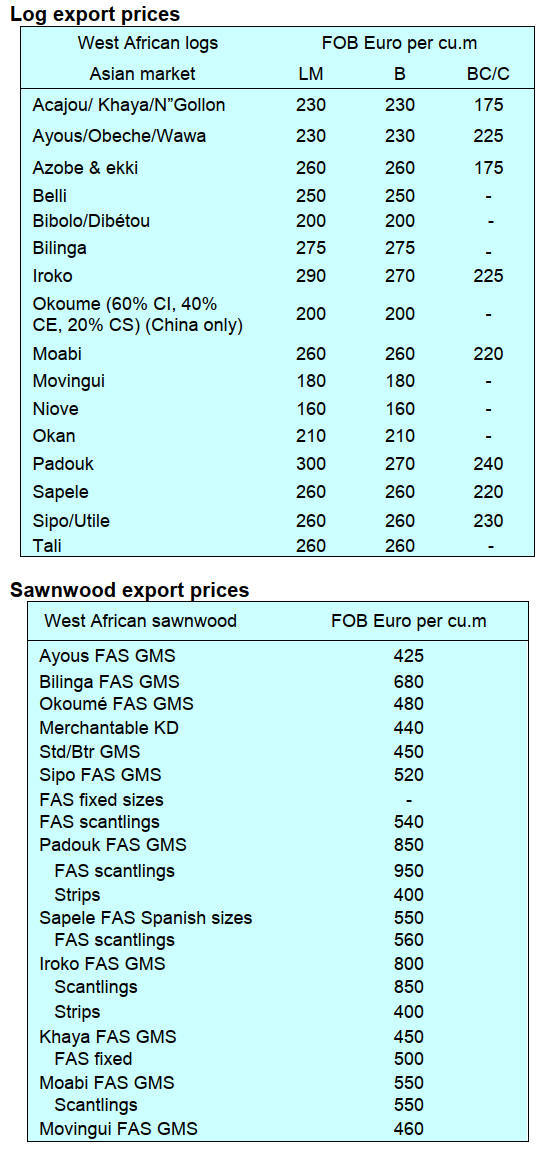
Resumption of the TRACER service for Nkok SEZ
Tracer Gabon and Brainforest provided ATIBT with a
statement for circulation on resumption of the Nkok
Tracer services.
The ATIBT reports the statement as saying; “we are
pleased to inform of the decision by the Minister of Water
and Forests to authorise the full resumption of the
TRACER service for the Nkok SEZ”.
See:
https://www.atibt.org/en/announcements/267/towards-thefull-resumption-of-the-tracer-service-on-the-nkok-zis-gabon
2.
GHANA
Exports slide in the first quarter
According to data from the Timber Industry Development
Division (TIDD) of the Forestry Commission Ghana’s
wood product export volumes in the first quarter of 2024
declined almost 14% compared to the first quarter of 2023.
There was a corresponding decline in export earnings.
The decline was mainly due to the decline in teak log
exports, sawnwood and plywood. In contrast there was an
increase rotary veneer export volumes and earnings.
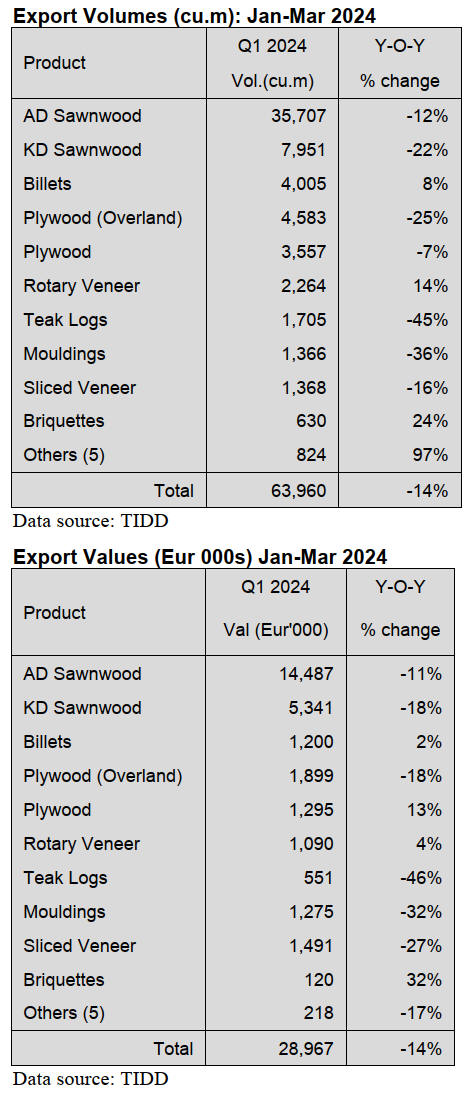
The leading export products int he first quarter 2024 were
air and kiln-dried sawnwood, billets and plywood for the
regional market. Exports of these products totalled
55,803cu.m (Eur24.22million) which accounted for 87%
of total export volume and 84% of total export values.
Air and kiln-dry sawnwood accounted for 68% of the total
export volumes in the first quarter 2024 with a
corresponding value of Eur19.83 million. The main
markets for sawnwood were India and Vietnam and the
preferred species included teak, denya, papo, wawa,
cedrela and mahogany.
Nature based solutions in Ghana, major emission
reduction purchase agreement
A press release from Tullow Oil outlines its partnership
with the Ghana Forestry Commission to implement a highintegrity,
jurisdictional-based Reduced Emissions from
Deforestation and Degradation (REDD+) programme.
The press release says “this programme is an important
milestone on the road to achieve Tullow’s 2030 Net Zero
target for Scope 1 and 2 greenhouse gas (GHG) emissions
(on a net equity basis). The primary focus of Tullow’s Net
Zero strategy is on decarbonising its operated production
facilities in Ghana in order to eliminate routine flaring by
the end of 2025.
Residual, hard-to-abate, emissions will be mitigated by
Tullow’s investment in high quality, nature-based
solutions in the form of a REDD+ programme through a
partnership with the Forestry Commission of Ghana,
which is responsible for the sustainable management of
Ghana’s forests and wildlife.
The programme will focus on approx. 2 million hectares
of land across 14 priority districts in the Bono and Bono
East regions, which are among the areas most effected by
deforestation due to economic activities such as cash crop
clearance and overgrazing”.
See:
https://www.tullowoil.com/media/press-releases/tullowtakes-next-step-net-zero-pathway-nature-based-solutions-ghana/
Mitigating threats to forests and biodiversity
The United States Agency for International Development
(USAID) and the Forestry Commission of Ghana have
jointly developed a plan ‘Country Development
Cooperation Strategy’ (CDCS) aimed at understanding
and mitigating threats posed to Ghana’s tropical forests
and biodiversity.
At a meeting led by experts from the Cadmus Group and
the Forestry Commission it was determined the mission is
to preserve and enhance the natural landscapes that define
Ghana’s identity. One of the topics discussed wasn
mangrove forest preservation and natural regeneration.
See:
https://fcghana.org/usaid-and-forestry-commission-plan-forthe-future-of-ghanas-forests/
Massive support for Ghana Green Ghana Day
The country marked the 4th ‘Green Ghana Day’ with high
patronage from the private and public sector institutions
across the 261 districts and 16 regions in the country on
the theme ‘Growing for a Greener Tomorrow’.
The government had targeted to plant 10 million seedlings
this year nationwide with six million trees planted in
degraded forest reserves while four million trees were
planted at farms, parks, recreational grounds, along roads
and in communities. Seedlings were made available at the
Ministry of Lands and Natural Resources and District
Offices of the Forestry Commission throughout the
country.
Prior to this year’s ‘Green Ghana Day’ the sector Minister
Samuel Abu Jinapor and the Chief Executive of the
Forestry Commission Mr. John Allotey, travelled across
the country and encouraged everyone to come out to plant
a tree. The ‘Green Ghana Day’ is part of government’s
aggressive afforestation and re-forestation programme to
restore degraded forests
See:
https://thebftonline.com/2024/06/05/2024-green-ghana-daygovt-targets-planting-over-10m-trees
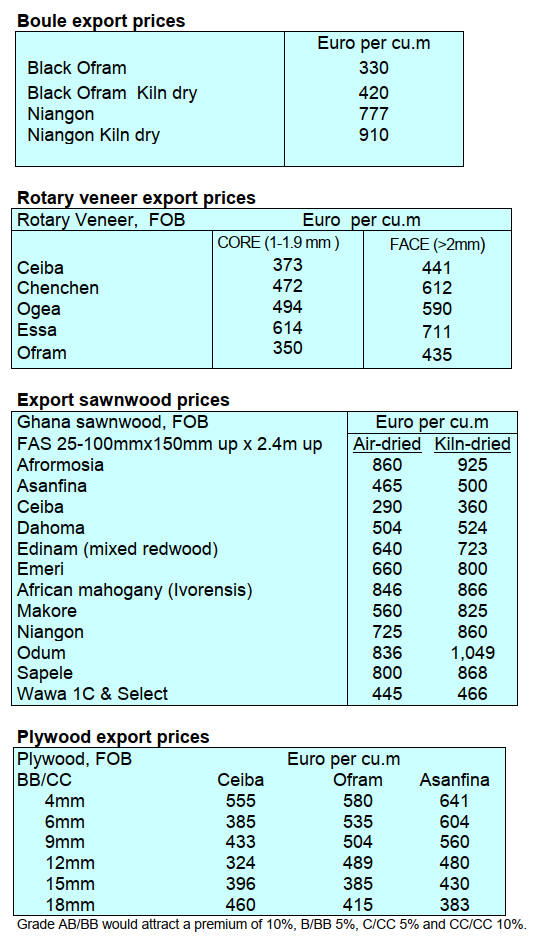
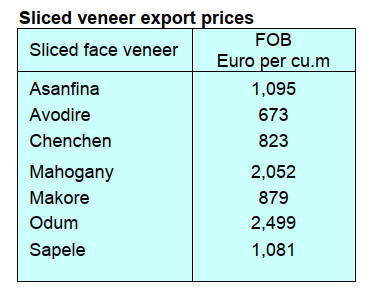
3. MALAYSIA
Financing forest conservation activities
A non-market-based mechanism, the Forest Conservation
Certificate (FCC), has been introduced by the Malaysian
government to finance forest conservation activities.
The Minister of Natural Resources and Environmental
Sustainability, Nik Nazmi Bin Nik Ahmad, said the FCC
(a non-market mechanism to channel funds from the
private sector to support forest conservation projects in the
country) is one of the mechanisms developed by the
Malaysia Forest Fund (MFF).
FCCs can be used by companies to meet environmental,
social and governance (ESG) reporting requirements under
the biodiversity topic, said the Minister. Also, the Ministry
of Finance has approved a 10% tax deduction for
companies that participate in FCC activities.
See:
https://thesun.my/local-news/govt-introduces-fcc-tofinance-forest-conservation-activities-FO12497983
and
https://theedgemalaysia.com/node/713084
Alternative revenue sources
According to Sarawak Premier, Abang Johari Tun Openg,
the State is transitioning from an era of a logging-based
economy to sustainable management of forests.
He added, Sarawak no longer depends on logging
activities as a major source of income but is now exploring
renewable energy and other sustainable initiatives to drive
economic growth.
He is reported in the domestic media as saying “I want the
industry to understand why we have reduced the export of
logs and why we are discouraging the cutting of trees
unlike before. This is because we now have alternative
ventures that we can pursue to grow our economy.”
The Premier reported that Sarawak has reduced the
volume of timber harvested by about two million cubic
metres per year.
See:
https://theborneopost.pressreader.com/article/281483576532515
Ecological Fiscal Transfer
Federal funding allocated to various states has played a
pivotal role in safeguarding critical forests and marine
ecosystems from destruction, making it crucial for state
governments to fully utilise such incentives.
Introduced in 2019 the Ecological Fiscal Transfer for
Biodiversity Conservation (EFT) has effectively preserved
vital areas serving as primary water sources and fishing
grounds which are also sources of income for coastal
communities and food.
More than 90,000 ha spanning across Kedah, Perak, Perlis,
Penang, Selangor, Terengganu, Sabah and Sarawak have
been gazetted as permanent forest reserves via the EFT
implementation.
See:
https://www.thestar.com.my/news/nation/2024/05/26/crucialforests-and-marine-life-saved-by-eft
4.
INDONESIA
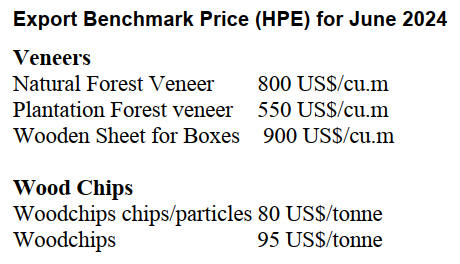
Processed Wood
Processed wood products which are leveled on all four
sides so that the surface becomes even and smooth with
the provisions of a cross-sectional area of 1,000 sq.mm to
4,000 sq.mm (ex 4407.11.00 to ex 4407.99.90)

Processed wood products which are leveled on all four
sides so that the surface becomes even and smooth with
the provisions of a cross-sectional area of 4,000 sq. mm to
10,000 sq.mm (ex 4407.11.00 to ex 4407.99.90)

Processed wood products which are leveled on all
four
sides so that the surface becomes even and smooth with
the provisions of a cross-sectional area of 10,000 sq.mm to
15,000 sq.mm (ex 4407.11.00 to ex 4407.99.90)

See:
https://jdih.kemendag.go.id/pdf/Regulasi/2024/661_Kepemendag%20HPE%20dan%20HR%20Produk%20Pertanian%20dan%20Kehutanan%20Juni%202024.pdf
and
https://forestinsights.id/keputusan-menteri-perdagangan-terbitberikut-harga-patokan-ekspor-hpe-produk-kayu-juni-2024/
Aligning land inventory method with that used
for the
EUDR
The Minister of Environment and Forestry, Siti Nurbaya
Bakar, has emphasised the need for adjustments to land
inventory measurement methods in Indonesia to align with
the European Union Deforestation Regulation (EUDR).
Field observations conducted jointly with the World
Research Institute (WRI) underscore the need to tailor the
measurement approach used in Indonesia with that used to
implement the EUDR, she added.
See:
https://mediaindonesia.com/humaniora/675221/menteri-lhkpengukuran-deforestasi-di-ri-perlu-metode-yang-lebih-akurat
Study China and Vietnam to boost competitiveness of
furniture industries
The Indonesian Furniture and Crafts Industry Association
(HIMKI) is seeking government support to improve the
competitiveness of the national furniture industry. HIMKIi
Chairman, Abdul Sobur, said the Association is exploring
potential markets and working to improve the sector
performance.
He called for the government to play a significant role in
supporting improved industrial productivity and cited
examples in China and Vietnam where the governments
are supportive and encourage competiveness.
Sobur explained that the past poor performance of
Indonesia’s furniture sector was due to low demand from
traditional markets, especially the United States and
Europe. To address this industry players are now focusing
on the domestic market and exploring potential nontraditional
markets.
According to Sobur, Indonesia should follow China's
example in increasing furniture exports.
He highlighted that, while Indonesia's average exports in
recent years have only reached US$2.5 billion, China's
exports have reached almost US$20 billion.
He explained that industrial competitiveness can be
enhanced by implementing policies that improve the
business climate.
See:
https://www.msn.com/id-id/berita/other/ri-diminta-tiruchina-dan-vietnam-tingkatkan-daya-saing-industri-mebel/arBB1n4wD2?ocid=BingNewsSearch
Indonesia’s rattan as a replacement for plastic
furniture
The Indonesian Furniture Industry and Handicrafts
Association (ASMINDO) plans to promote Indonesian
rattan as a raw material for furniture material as an
alternative to plastic. General Chairman of ASMINDO,
Dedi Rochimat, stated that the Association is committed to
introducing Indonesian rattan products to the global
furniture market as an alternative to plastic materials.
"In March, we declared bamboo and rattan as alternatives
to plastic. This is one of our commitments," said Dedy at
the Furniture Industry Gathering by IFFINA.
As a sign of his commitment to introducing rattan to the
global market Dedy stated that ASMINDO would assist
the government in establishing a logistics centre. One
wood logistics centre has been completed and ASMINDO
is currently constructing a rattan logistics centre in
Cirebon.
See:
https://www.detik.com/properti/berita/d-7358007/bakalgantikan-mebel-plastik-rotan-ri-siap-serbu-pasar-global.
EUDR, a possible barrier to furniture and handicraft
exports
The export of Indonesian forestry and plantation products
are facing numerous barriers. Most recently, the European
Union (EU) has introduced a new regulation, the European
Union on Deforestation-Free Regulation (EUDR).
Abdul Sobur, General Chair of the HIMKI, said "this nontariff
barrier regulation has the potential to hinder the
export of Indonesian furniture and craft products to
Europe, adding, it is possible Indonesian exports will be
impacted if we fail to meet EUDR requirements." Sobur
stressed that the EUDR procedure, specifically the due
diligence for product traceability will be a major challenge
for many HIMKI members as not all will be able to put in
place proceedures to satisfy the EUDR requirements.
Sobur explained that HIMKI is working to assist furniture
and crafts entrepreneurs in addressing current issues such
as the regulations in the EUDR. They are also urging the
government to anticipate the impact of these EU
regulations. "The government must take the lead in
anticipating the impact of the EUDR by engaging in
cooperation negotiations or other initiatives", he said.
See:
https://agroindonesia.co.id/eudr-ranjau-baru-bagi-ekspormebel-dan-kerajinan-nasional/
and
https://www.industry.co.id/read/133283/himki-angkat-suarasoal-kebijakan-eudr-ranjau-baru-ekspor-mebel-dan-kerajinanindonesia
Promoting furniture in Dubai
The Ministry of Trade has promoted high-quality
Indonesian furniture and home decoration products at the
furniture exhibition, known as INDEX which was held in
Dubai.
According to the ministry the global furniture and home
decoration market offers promising opportunities. The
projected revenue for the global furniture market is
expected to reach US$280 billion in 2024 with an
estimated annual growth rate of 9% over the next 5 years.
The largest segment within this market is living room
furniture and this was the focus of Indonesia's
participation at INDEX 2024. Dubai is seen as a trade hub
for the Middle East, Africa and South Asia taking
advantage of the existing trade agreement between
Indonesia and the UAE known as the Indonesia-UAE
CEPA.
See:
https://www.kemendag.go.id/berita/foto/kemendagpromosikan-furnitur-di-dubai-dengan-memanfaatkan-indonesiauae-cepa
Partnership among tropical countries on climate
change mitigation
Collaboration among tropical forest nations is deemed
crucial for supporting sustainable management,
biodiversity conservation and climate change mitigation.
Acting Director General of Sustainable Forest
Management at the Ministry of Environment and Forestry
(KLHK), Agus Justianto, emphasised the need for
collaborative efforts among nations to align their work in
forest management and conservation.
The Tropical Forest for Climate Action Partnership,
initiated by Indonesia, Brazil and the Democratic Republic
of Congo, aims to reduce greenhouse gas (GHG)
emissions by preserving and restoring tropical forests.
These countries share knowledge and best practices in
forest management and work together to enhance the
benefits of their tropical forests for the environment and
communities.
See:
https://forestinsights.id/strategic-partnership-amongtropical-forest-nations-to-boost-climate-change-mitigation/
Deforestation success evidence of effective fund
management: Minister
Finance Minister Sri Mulyani Indrawati emphasised that
Indonesia’s successful reduction in deforestation is
evidence of effective management of environmental funds
from overseas. She made the statement after attending a
meeting between President Joko Widodo and Norwegian
Climate and Environment Minister Andreas Bjelland
Eriksen.
She added, the Indonesia Environment Fund has gained
international trust as an institution capable of efficiently,
accountably and transparently and is delivering results.
Indonesia and Norway collaborate through
result-based
contributions for Reducing Emissions from Deforestation
and Forest Degradation (REDD+). A 20-million-ton
reduction in carbon emissions during 2014–2016 was
offset by REDD+ funding through the BPDLH.
See:
https://en.antaranews.com/news/315045/deforestationsuccess-evidence-of-effective-fund-management-minister

5.
MYANMAR
World Bank cuts Myanmar's growth forecast
Economic growth in Myanmar will be around 1% for the
2024-2025 fiscal year according to the World Bank
Economic Report. Growth prospects have been eroded by
the armed conflict, labour shortages and a depreciating
currency, all of which make it hard to do business. In
December the Bank projected a 2% GDP growth.
Faced with expanded armed resistance the Myanmar
authorities announced a conscription plan to replenish the
depleted military manpower. This has resulted in
migration to rural areas or overseas leading to labour
shortages.
Access to some key land borders with China and Thailand
has been lost leading to a sharp drop in overland trade.
Overall, merchandise exports fell by 13% and imports
dropped by 20% in the six months to March 2024
compared to the same period a year earlier according to
the World Bank.
See:
https://www.worldbank.org/en/news/pressrelease/2024/06/12/threat-to-livelihoods-deepens-as-myanmareconomic-outlook-remainsweak#:~:text=The%20World%20Bank's%20Myanmar%20Economic,forecast%20of%202%20percent%20growth.
Malaysia and Thailand call for innovative approaches
on Myanmar
Ahead of Malaysia assuming the ASEAN chairmanship,
Malaysia’s Prime Minister, Anwar Ibrahim, repeated his
calls for an end to violence and political marginalisation in
Myanmar.
He pointed to the ASEAN five-point consensus) and stated
Malaysia’s commitment to working with other ASEAN
member states and influential dialogue partners to push for
peace, effective humanitarian mechanisms and the
eventual political engagement of all relevant stakeholders.
The authorities in Thailand have also called for ASEAN to
take a more proactive role in trying to resolve the crisis in
military-ruled Myanmar after weeks of fighting near its
border that halted trade and led to an influx of refugees.
See:
https://www.straitstimes.com/asia/se-asia/malaysian-pmanwar-calls-for-an-end-to-violence-in-myanmar
and
https://www.channelnewsasia.com/asia/thailand-urges-biggerasean-role-resolving-myanmar-conflict-2021-coup-4295161
More restrictions on importers
From July this year importers in Myanmar will face new
restrictions aimed at reducing the outflow foreign
exchange. The restrictions, announced by the Ministry of
Trade and Commerce, include penalties for importers who
land goods before securing an import license. It was
common practice for importers to place orders before they
get official authorisation due to the length of time that it
takes to get such approval. If goods arrive before the
license is issued the goods would be held by Customs.
See-
https://myanmar-now.org/en/news/myanmar-junta-imposesmore-restrictions-on-imports/
Impact of conflict on Thai condominium market
The Thai condominium market is facing challenges due to
a crackdown by authorities in Myanmar on nationals
purchasing properties abroad. This has significantly
impacted the Thai real estate market which had seen a
surge in Myanmar buyers.
Myanmar nationals became a major segment in Thailand’s
real estate market, rising from the sixth largest group of
foreign buyers in 2022 to the second in early 2024. The
change came after the 2021 military coup in Myanmar
which led to economic and political instability.
Despite the crackdown, there is still interest in Thai
properties from Myanmar nationals. However, further
restrictions on currency remittance could impact the
market further. The influx of Myanmar money has led to
areas such as Hua Hin becoming known for the
concentration of properties owned by families of top
Myanmar military officials.
See-
https://www.rfa.org/english/news/myanmar/myanmarthailand-property-06122024033523.html
and
https://thethaiger.com/news/national/thai-condo-market-facesturbulence-with-myanmar-buyers-blocked
Myanmar and Russia talks to revive Dawei Port project
Myanmar has begun talks with Russia to revive the longstalled
Dawei deep-sea port project in the country’s south
according to a senior regime official.
According to Aung Soe, Chair of the Dawei Special
Economic Zone Management Committee, the two sides
met for preliminary discussions after the Russian embassy
and several private Russian companies expressed an
interest in the project.
See:
https://myanmar-now.org/en/news/myanmar-junta-andrussia-begin-talks-to-revive-dawei-port-project/
6.
INDIA
Only monsoon rain will
quell fires
The correspondent writes; “the North-West Monsoon has
arrived in Southern India and is gradually heading north.
Presently, summer is very strong and forest fires are
appearing in hilly areas amid the dry spell. State
governments in Northern India are trying to keep the fires
under control until the end of June when the entire country
will be experiencing monsoon rains. On the domestic
manufacturing front, plywood, MDF and
particleboard manufacturers are considering increasing
prices as raw material cost climb.
In additional news, ocean freight rates continue to rise but
it appears they have peak-out and settled. Indian importers
are keeping their fingers crossed that rates will come down
but until then it is too costly to import large volumes of
timber especially lower valus items such as small diameter
teak logs.
Why surge in freight rates?
Container freight rates fluctuated dramatically between
January 2023 and May 2024. Freight rates slumped to
their lowest level in October 2023 when the cost for a 40-
foot container was only US$1,342. Since then global
freight rates have gradually increased, rising to over
US$4,200 in June 2024.
There are several reasons behind the rise in rates; the crisis
in the Red Sea means that ships to Europe must sail
around Africa instead of through the Suez Canal, charges
related to climatic requirements also contribute to price
increases. Additionally, at the end of April and the
beginning of May, there was unfavorable weather in Asia
which obstructed navigation.
Against this background of port congestion, a shortage of
containers and lack of ships, even a small increase in
demand was enough to drive up freight rates significantly.
See:
https://www.logisticsinsider.in/freight-rates-surge-amidst-rising-demand-and-supply-chain-disruptions/
and
https://trans.info/en/sea-freight-rates-388882
Manufacturing inflation slows
The annual rate of inflation based on the India Wholesale
Price Index (WPI) was 1.26 % for April 2024. The
positive rate of inflation in April was primarily due to
increase in prices of food, electricity, petroleum and
natural gas and some manufactured products.
The index for manufacturing increased to 140.8 in April
from 140.1 for March. Out of the 22 NIC two-digit groups
for manufactured products, 15 groups saw an increase in
prices, for 5 groups there was a decline in prices and for 2
groups there was no change.
Some of the groups that showed month on month increase
in prices were basic metals, other manufactured goods,
textiles, food products and chemical products.
Some of the groups that witnessed a decrease in prices
were other non-metallic mineral products, paper and paper
products, motor vehicles, trailers and semi-trailers,
furniture and leather products.
See:
https://eaindustry.nic.in/pdf_files/cmonthly.pdf
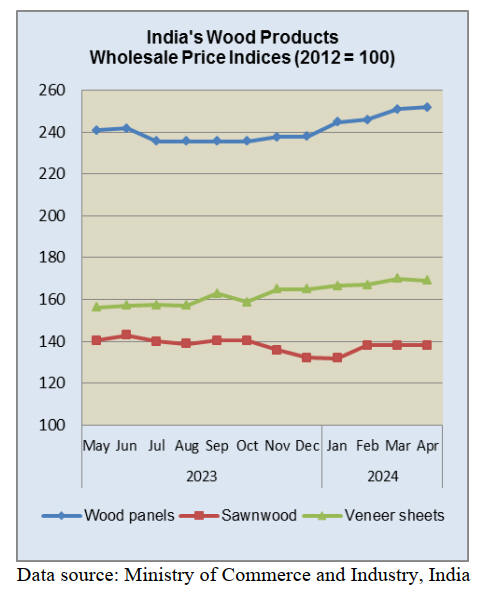
Rising eucalyptus log prices
In April domestic Eucalyptus log prices supplied to MDF
mills in Northern India have risen to INR7,500 per tonne
(around US$90) which is undermining profit margins of
MDF producers. The rise in price is the result of
competition for raw materials by new manufacturing
plants in this region. Producers are of the view that MDF
prices will inevitable rise.
See:
https://www.plyreporter.com/emagazine
India - 4th largest furniture market world wide
In May Research and Markets annonced their latest
assesmnet of the furniture market in India saying; “The
Indian furniture market is valued at US$20 billion and has
grown at an annual average rate of 6% during the last ten
years.
This growth trend makes India the 4th largest furniture
market worldwide, climbing from the 10th position held
ten years ago.
Within Asia and Pacific, India is the second largest
furniture market after China, and one of the projected
fastest growing in 2024 and 2025, driven mainly by
increasing urbanisation, expansion of the middle class,
growing investments in the residential and non-residential
sectors, government support and modernisation of
furniture retail.
Even though imports satisfy less than 10% of the Indian
furniture market, they have grown fast in the last few years
and the potential for high-end / luxury furniture imports is
particularly high“.
See:
https://www.researchandmarkets.com/report/india-furniture-market#src-pos-1
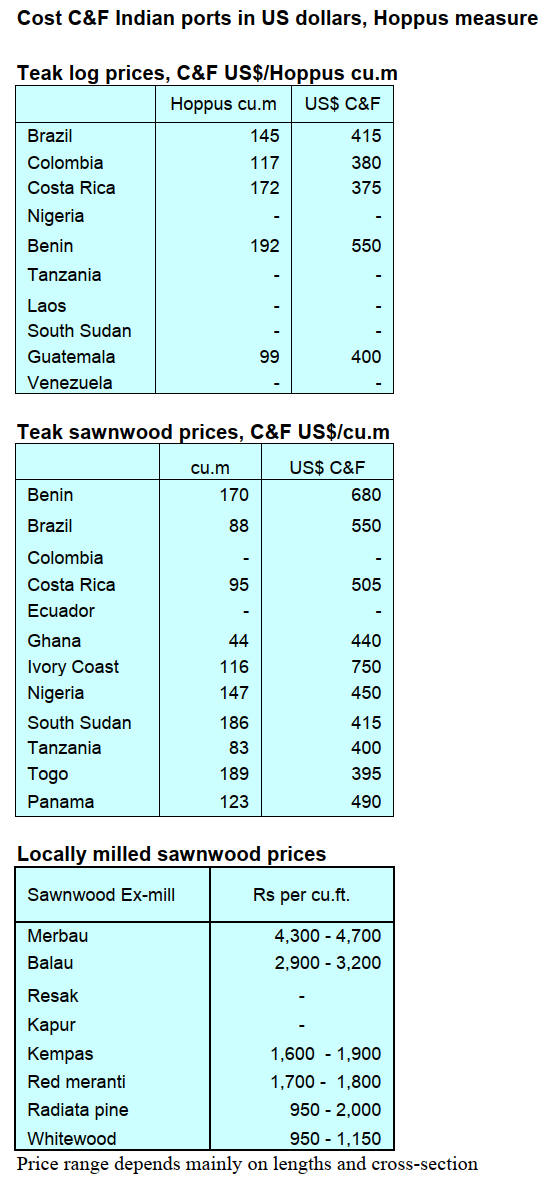 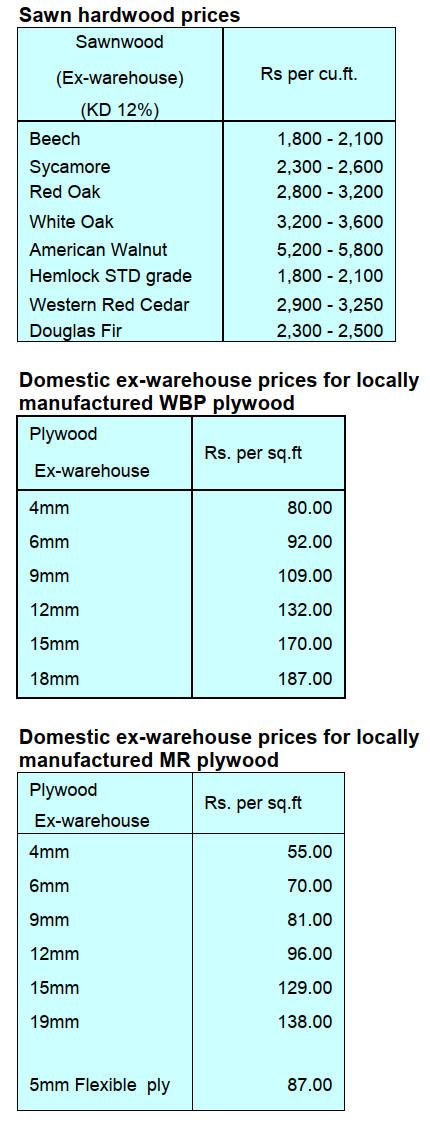
7.
VIETNAM
Wood and wood products (W&WP) trade highlights
According to the statistics provided by Vietnam
Office
of Customs in May 2024, Vietnam’s W&WP exports
earned US$1.25 billion, down 8% compared to April 2024
but up 18% against May 2023. Of this, WP exports
accounted for US$812 million, down 14% compared to
April 2024, but up 6% compared to May 2023. In the first
5 months of 2024 W&WP exports reached US$6.1 billion,
up 24% year-on-year. The WP exports alone earned
US$4.16 billion, up 23% over the same period in 2023.
W&WP exports to the US in May 2024 earned
US$710 million, down 8% compared to April 2024, but up
13% compared to May 2023. In the first 5 months of 2024
W&WP exports to the US earned US$3.4 billion, up 27%
over the same period in 2023.
In May 2024 bedroom furniture exports were valued at
US$163 million, up 58% compared to May 2023. Over the
first 5 months of 2024 exports of bedroom furniture
brought in about US$777 million, up 34% over the same
period in 2023.
Vietnam's W&WP imports in May 2024 were valued
at US$250 million, up 7% compared to April 2024 and up
16% compared to May 2023. In the first 5 months of 2024
W&WP imports cost US$1.02 billion, up 20% over the
same period in 2023.
The volume of tali imports in May 2024 was at 45,300
cu.m, worth US$16.5 million, up 8% in volume and 7% in
value compared to April 2024. Compared to May 2023,
the imports decreased by 19% in volume and by 35% in
value. In the first 5 months of 2024 imports of tali
amounted to 136,700 cu.m, worth US$51.3 million, down
31% in volume and down 39% in value over the same
period in 2023.
Preparing readiness for aligning EUDR in Vietnam’s
rubber sector
Implementation of the EUDR will mean commercial
agricultural goods delivered to the EU market will have to
meet and demonstrate the conditions of the EUDR
throughout the entire supply chain. For Vietnam, the main
three sectors affected will be coffee, rubber, wood and
wood products.
Implementing sustainable development of the rubber
industry
In May 2024 the Vietnam Rubber Group (VRG)
coordinated with the Vietnamese Academy of Forest
Sciences (VAFS) and the Vietnam Forest Certification
Office (VFCO) and organised a workshop “Developing
Action Plan to Adapt to EUDR Regulation”. The
workshop was hosted by Mr. Tran Cong Kha, Chairman of
VRG, most VRG Board of Directors and about 100
delegates who are leaders and technical staff of 63 rubber
companies.
At the workshop, Mr. Tran Lam Dong, Vice President
of
VAFS and Mr. Vu Tan Phuong – Director of VFCO
discussed the requirements of EUDR, the draft
PEFC/EUDR Due Diligence System (PEFC/EUDR DDS).
The workshop discussed and agreed to prepare for EUDR
implementation through establishing EUDR/DDS, building
capacity and implementing PEFC/ EUDR certification in
the framework of the Vietnam Forest Certification Scheme
(VFCS/PEFC).
VFCO will continue to coordinate closely with PEFC
and VRG to promote sustainable rubber industry
development through certification of sustainable forest
management (SFM) and chain of custody (CoC)
associated with the EUDR Due Diligence System (PEFC
EUDR DDS).
See:
https://vfcs.org.vn/en/news/preparing-readiness-for-aligning-eudr-in-vietnams-rubber-sector/
Cameroon top shipper of Tali to Vietnam
At the top of tali wood suppliers to Vietnam, was
Cameroon with a share of over 70% of total tali imports in
the first 4 months of 2024 at 67,100 cu. m, worth US$25.5
million, down 35% in volume and 40% in value over the
same period in 2023.
Tali price fluctuation
According to Customs statistics the average price for
imported tali in the first 4 months of 2024 reached
US$379.6/cu.m, down 8% over the same period in 2023.
In particular, the price of tali imported from Cameroon
dropped by 8% down to 379.6 US$/cu.m.
The price from Congo was down by 20% to US$380.8/cu.
m and from Cambodia by 3% to US$257.6/cu. m.
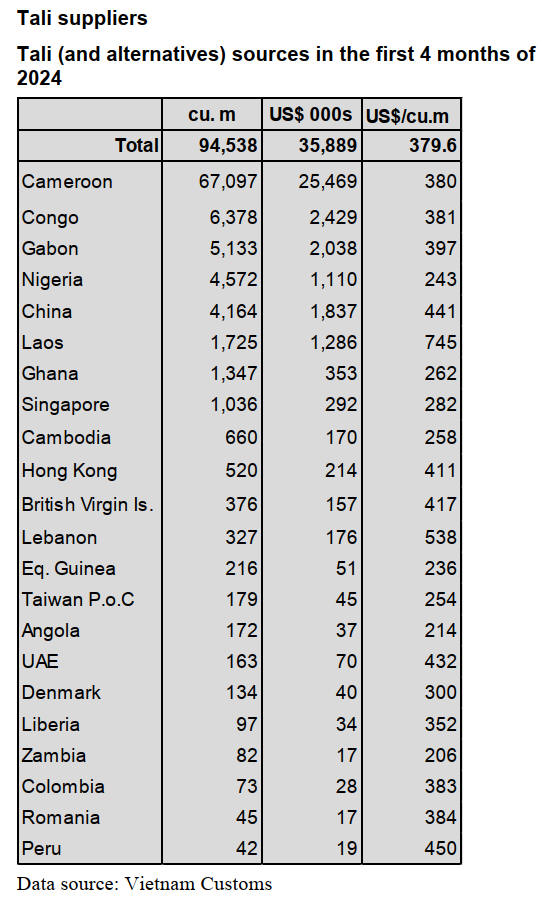
In the first 4 months of 2024 imports of tali from most
sources decreased over the same period in 2023 except for
Nigeria, China and Cambodia. Imports of tali from the
Congo reached 6,400 cu. m, worth US$2.4 million, down
49% in volume and down 59% in value over the same
period in 2023.
Tali imports from most other markets decreased against
the same period in 2023 such as from Gabon, down 35%;
Laos by 57%; Ghana by 32.5%, Hong Kong by 80% and
Equatorial Guinea by over 90%.
In contrast tali imports from Nigeria increased 61% over
the same period in 2023 reaching 4,600 cu.m and from
China by 72% at 4.200 cu. m and from Cambodia tali
imports doubled to 660 cu.m.
8. BRAZIL
Advances in wood
construction systems in Brazil
An assessment of wood construction systems in Brazil was
presented at the plenary meeting of the Brazilian
Association for Mechanically Processed Timber
(ABIMCI). The meeting brought together industries from
the wood and forestry sector, government representatives,
technical and educational institutions and associations to
discuss a wide range of issues and advances in wood
construction especially the wood frame and engineered
wood systems.
One of the major advancements presented was the
proposed development of a digital platform that will
centralise data on wood construction, including research,
courses, events, workshops, standards and regulations. The
platform will be managed by Senai State of Paraná which
aims to facilitate access and dissemination of information.
The Research, Development and Innovation working
group identified the main needs of the wood frame and
engineered wood industry required to guide future
research and development. The Public Policies working
group proposed solutions to encourage architectural
competitions and the construction of public works using
models adopted by the Council of Architecture and
Urbanism (CAU) and the Institute of Architects of Brazil
(IAB).
Tax issues and improvements in bidding processes for
projects that include wood construction were also
discussed. The Market, Promotion and Dissemination
working group defined strategies to reach different
audiences such as developers, insurance companies,
researchers and architects as well as planning participation
in important events such as the International Wood Week
(SIM). The Workforce Qualification working group
highlighted the development of new courses and
international partnerships for the training of specialised
workers with curricula being developed by Senai Paraná.
ABIMCI also emphasised that wood constructions
represent a unique opportunity to combine efficiency,
sustainability and economic development with the solid
support of various industry sectors and the government
marking a positive leap for the market and the sector as a
whole.
See:
https://abimci.com.br/consolidacao-dos-sistemas-construtivos-em-madeira-no-brasil-tem-importantes-avancos/?utm_campaign=Abimci+News&utm_content=Um+momento%E2%80%A6&utm_medium=email&utm_source=dinamize&utm_term=Abimci+News+114+-+Edi%C3%A7%C3%A3o+Maio+2024
Digital platform for National Forest Inventory data
A digital platform with open data from the National Forest
Inventory (IFN) was launched by the Ministry of the
Environment and Climate Change (MMA) and the
Brazilian Forest Service (SFB) in May 2024 aiming to
facilitate public access to forest information.
The National Forest Information System (SNIF) will host
the data made available through interactive panels and
digital spreadsheets also covering information about local
communities.
Brazil has 4.96 million sq.Km of forests (60% of the
national territory) holding the largest area of national
tropical forests in the world. The National Forest
Inventory is a tool that delivers information on natural and
planted forest resources.
The IFN will collect and disseminate qualitative and
quantitative data about forests and local communities to
guide public policies, investments and scientific research.
To-date, more than 125,000 botanical samples have been
collected from over 10,000 sampling points, cataloging
more than 900,000 trees and identifying 8,400 species,
including the discovery of 13 new species.
The IFN's efforts have covered 100% of the Pampa biome
and partially the Caatinga (71%), Cerrado (78%), Atlantic
Forest (58%) and Amazon (44%) biomes. The Pantanal is
the next biome to be inventoried.
The project is supported by the Inter-American
Development Bank (IDB), the Inter-American Institute for
Cooperation on Agriculture (IICA), the National Bank for
Economic and Social Development (BNDES) through the
Amazon Fund and the United Nations Food and
Agriculture Organization (FAO).
See:
https://forestnews.com.br/inventario-florestal-nacional-plataforma-digital/
Participation in Carrefour International du Bois
A delegation of forest sector entrepreneurs of Mato Grosso
State participated in the Carrefour International du Bois
Fair held at Exponantes Park in Nantes.
The event is recognised as one of the most important in the
timber sector and featured the participation of
approximately 670 exhibitors. Additionally, the event
attracted the interest of importers from various countries
including Belgium, Germany, Italy, Portugal, Denmark,
South Africa, the United States and France.
The delegation from Mato Grosso State consisted of 30
entrepreneurs associated with the Center of Timber
Exporting Industries of the state of Mato Grosso (CIPEM)
which represents 523 companies in the forest sector.
Among the most sought after tree species in international
consumer markets are angelim-pedra (Hymenolobium
petraeum), ipê (Tabebuia impetiginosa), cumaru (Dipteryx
odorata), itaúba (Mezilaurus itauba), garapa (Apuleia
leiocarpa), jatobá (Hymenaea courbaril), cherry (Prunus
avium), Amazon cedar (Cedrelinga catenaeformis),
jequitibá-rosa (Cariniana legalis) and caixeta (Simarouba
amara).
With 5.0 million hectares of managed and conserved
forests the private sector in the State of Mato Grosso
produced the equivalent of 7 million cubic metres of wood
in 2022 from sustainably managed forest areas and
contributed R$66 million in taxes.
Mato Grosso State is a centre for sustainable timber
production, generating jobs and providing significant
revenue for the local economy. The state maintains a
forest production tracking system (Sisflora 2.0) ensuring
the origin and legality of the products.
The participation of entrepreneurs from Mato Grosso in
the international Fair not only highlights the importance of
the forest sector in the State but also indicates the efforts
made to search for new business opportunities and
commercial partnerships in an increasingly demanding
global market.
See:
https://simenorte.com.br/noticias/empresarios-do-setor-florestal-de-mato-grosso-participam-de-feira-internacional-na-franca/;
https://cipem.org.br/noticias/setor-florestal-de-mato-grosso-promove-rodadas-de-negocios-durante-feira-internacional-na-franca
Furniture exports, four consecutive monthly increases
Brazilian furniture exports recorded their fourth
consecutive rise in April 2024 reaching US$59.5 million,
an almost 1% increase compared to March. According to
the Brazilian Association of Furniture Industries
(ABIMÓVEL) this continued growth reflects the gradual
recovery of the sector which saw a 0.6% increase in the
first quarter of 2024 compared to the same period last
year.
ABIMÓVEL points out that, despite the increase in
exports, competition with imported products especially
from China, continues to challenge the sector. Imports
grew by 75% in the first quarter of 2024 and 49% in the
last 12 months, although there was a 2% decline between
March and April. The furniture trade balance remained
positive with a surplus of US$36.5 million in April and
over US$126.7 million for the first quarter.
The National Confederation of Industry (CNI) attributes
the rise in imports to competitive pricing of imported
products compared to local product prices resulting from
high-interest rates and the burdensome tax system in
Brazil.
The lack of oversight and dumping practices also harm the
national industry leading to the loss of nearly 500,000 jobs
and a reduction in Federal revenue. The most impacted
sectors include wood, clothing, leather, metallurgy, metal
products and furniture.
To address these challenges, ABIMÓVEL supports the
approval of a draft bill revising the tax for imported
products to reduce tax inequality. Additionally, the New
Industrial Policy and measures such as accelerated
depreciation of assets are seen as essential for modernising
the industry and promoting more sustainable production.
The adoption of automation and digitalisation technologies
along with sustainable practices is essential for reducing
operational costs and increasing competitiveness and
should be supported by government incentives, says
ABIMÓVEL.
See:
http://abimovel.com/exportacoes-de-moveis-e-colchoes-registram-quarto-aumento-consecutivo-em-2024/


9. PERU
First quarter of
2024 exports fell
The Services and Extractive Industries Management of the
Association of Exporters (ADEX) has reported shipments
of wood products in the first three months of this year
totalled US$20.23 million, a drop of 28% compared to the
same period in 2023 (US$27.99 million)
This decline is partly explained by lower orders from the
main buyers, China (US$3.1 million) and the Dominican
Republic (US$2.9 million) for which demand dropped
48% and 7%, respectively. Other top markets were the US
and France. Shipments to the US accounted for 14% of
first quarter shipments and France 13% and a negative
percentage variation of -56%. Orders from Mexico fell
sharply in the first quarter.
According to figures from the ADEX Data Trade
Commercial Intelligence System, sawnwood was the most
top export product in the first quarter earning US$8.38
million, despite contracting by 24% compared to the same
period in 2023. Second ranked category included semi-
manufactured products (US$7.18 million, down 42%,
furniture products (US$1.26 million), firewood and
charcoal (US$1.10 million) and manufactured products in
general with US$0.99 million.
Concessionaire receives incentive for good forestry
practices
In an important advance for the sustainable management
of forests in Ucayali the Parihuelas El Sol consortium
became the first forest permit holder to receive an award
for good forestry practices. The incentive, granted by the
Regional Forestry and Wildlife Management of Ucayali
(GERFFS), was because of their good management as
accredited by the Management Information System
(SIGOSFC) of the Forestry and Wildlife Resources
Supervision Agency (OSINFOR).
The incentive is a 15% discount on the payment for the
‘Right to Forestry Use’ in accordance with the policy
approved by the National Forestry and Wildlife Service
(SERFOR) in 2023.
See:
https://www.gob.pe/institucion/osinfor/noticias/970568-retrabajo-a-la-sostenibilidad-concesionario-maderero-recibe-el-primer-incentivo-por-buenas-practicas-forestales-en-ucayali
Law agencies trained in the use of tools to combat
timber trafficking
In a joint effort to strengthen the fight against timber
trafficking the Forestry and Wildlife Resources
Monitoring Agency (OSINFOR) and an Environmental
Team from the United Nations Office on Drugs and Crime
(UNODC) organised a workshop to strengthen the
technical capabilities of law officers in Ucayali.
A workshop ‘Implementation of information tools for the
investigation of illegal timber trafficking’ was held in
Pucallpa.
With the support of the German Cooperation (BMZ) and
within the framework of the second phase of the project
Criminal Justice Responses to Forestry Crimes. The
workshop brought together 35 professionals including
prosecutors, judges and administrators from the forestry
sector.
The objective was to strengthen the coordination of justice
system operators regarding the legal framework applicable
to the sustainable use of forest resources and the use of
information tools that contribute to the investigation of
environmental crimes.
See:
https://www.gob.pe/institucion/osinfor/noticias/963166-operadores-de-justicia-en-ucayali-se-capacitan-en-el-uso-de-herramientas-tecnologicas-del-osinfor-para-enfrentar-el-trafico-de-madera
SERFOR meets with fire experts from Latin America
and the Caribbean
In its capacity as host the National Forestry and Wildlife
Service (SERFOR) led the 6th Meeting of the ‘Group of
Experts on Forest Fires in Latin America and the
Caribbean’ (GEFF LAC) which aimed to share good
practices and identify strategies to improve the
management of these incidents in the region.
This meeting brought together experts from the entire
region (Brazil, Colombia, Chile, Mexico, Ecuador,
Uruguay, Bolivia, Argentina and Peru), and managers
from the relevant ministries and organisations, responsible
for the management of forest fires in their different phases,
from prevention, preparation, fire-fighting to restoration of
damaged areas.
See:
https://www.gob.pe/institucion/serfor/noticias/959553-serfor-se-reune-con-expertos-de-america-latina-y-el-caribe-para-mejorar-gestion-integral-ante-incendios-forestales
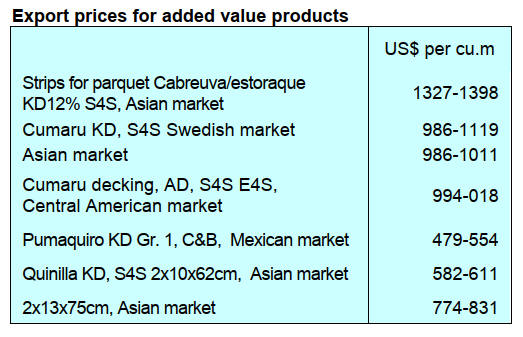 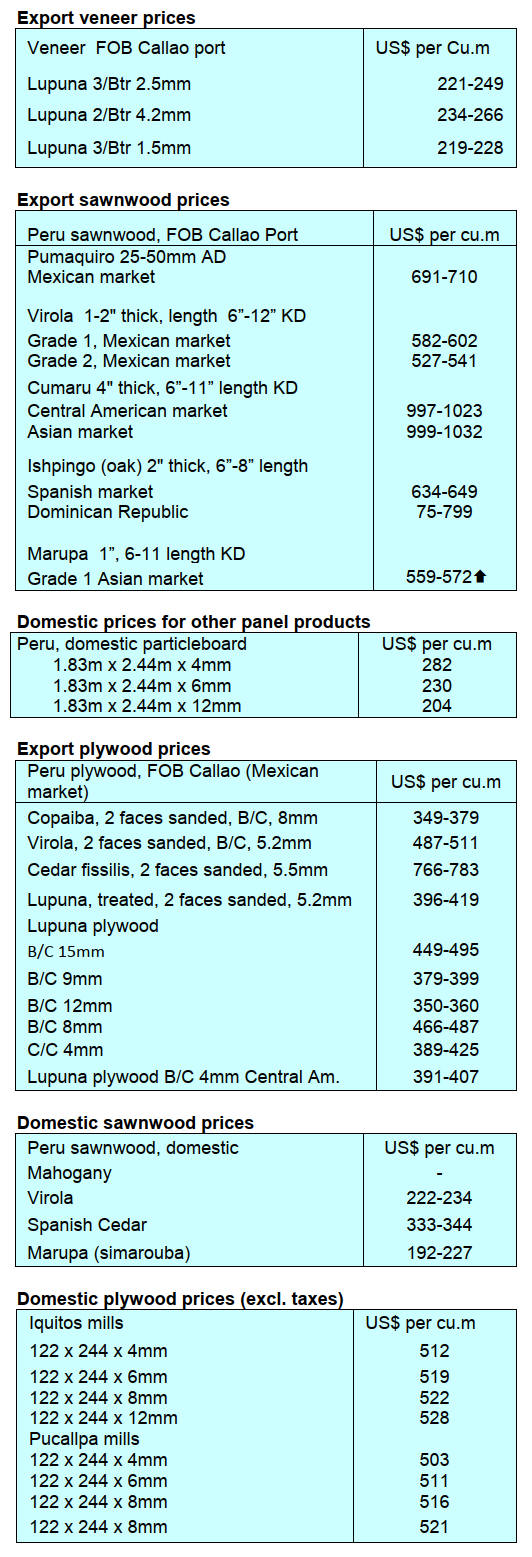
|